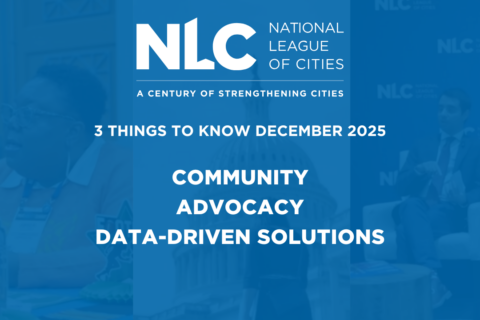From public works and sanitation to economic development and community engagement, the role that city governments play in serving their local communities is complex and multifaceted. When the work is this widespread, communicating across teams can be confusing and time-consuming, and it’s easy to slip into silos.
While a siloed approach to departmental work can feel like the most straightforward answer to the overwhelming responsibilities city governments face, there are important and long-lasting benefits for city governments who are willing to do the work to create systems for cross-departmental alignment.
What is Cross-Departmental Alignment?
Cross-departmental alignment is an organizational value for city governments which ensures that departments are committed to active communication, transparency and collaborative decision-making. This looks different in each city, but the core principle of this value is the promotion of ongoing and open communication between city employees in all areas of the government.
City governments who commit to building the infrastructure for cross-departmental alignment enjoy the ability to pool resources in areas including data, finances and staff capacity to target shared priorities within the community and provide better support to residents.
How Does Cross-Departmental Alignment Connect to Public Health?
Success in public health goes beyond clinical outcomes. Strong public health outcomes rely on government services that shape environments that allow all residents to live healthy and well.
A city government that embraces cross-departmental alignment can identify shared goals and share their resources to create policies and programs that leverage the city’s strengths to improve health and wellbeing outcomes for residents.
Ensuring departments are communicating effectively and efficiently throughout city government is critical in ensuring success across all city goals. For instance, a city working to improve affordable housing opportunities for residents may develop a cross-departmental team focused on that specific issue, so staff and officials are more broadly and consistently aware of opportunities for their departments to contribute to the success of that goal. When a city takes steps to take on public health and overall resident wellbeing as key goals across departments, cross-departmental alignment becomes a critical tool in achieving those goals.
3 Ways You Can Use Cross-Departmental Alignment to Improve Health and Wellbeing in Your City
Building Strength in Shared Goals
Establishing shared goals across departments is one of the key practices of cross-departmental alignment. Cities engaging in this practice create strong, multi-faceted systems for achieving their goals. Many of the public health issues facing city governments are complex and multifaceted, such as exposure to air pollution, access to public transportation or overall public safety. Effective action to confront issues like these requires unified efforts across departments. Shared goals also enable flexibility and offer departments to build unique strategies with systems developed specifically to achieve those goals.
For example, a city government may take steps to increase the urban tree canopy to improve air quality and combat the rising urban heat index. Establishing these outcomes as shared goals across all departments will encourage all departments to look for opportunities to increase the number of canopy trees planted in the community. This might look like the department of transportation partnering with the parks department to increase planting space, or the department of economic development designing an apprenticeship program to train arborists to take care of the newly planted trees.
Streamlining Information Sharing
Taking steps to streamline information sharing across departments not only expedites communication but also contributes to a greater sense of partnership and collaboration throughout city government.
When information is transparent across departments, it’s easier to spot opportunities for shared resources and improved efficiency which allows cities to target their resource allocation towards specific goals.
Both formal and informal channels for information sharing can improve the effectiveness of cross-departmental efforts and improve overall buy-in for new policies and programs designed to improve resident health outcomes.
Cities looking to improve their information-sharing practices can start by considering what regular channels of communication already exist between departments, and how those channels could be used more effectively. This might look like instituting a weekly internal newsletter for departments to share updates or regular meetings between department heads to highlight challenges and opportunities in their work.
Developing Structural Support for Your Policy Goals
Depending on the size and structure of your city government, ensuring alignment and communication across all departments can be a challenge. Building structural supports such as a specific office for coordinating between departments or assigning liaisons with departments to navigate cross-departmental communication can institutionalize these operations and keep things running smoothly.
Ideally, the structural supports will allow your city’s cross-departmental alignment efforts to withstand the changes that come with personnel turnover and the passing of time. Doing the work to institutionalize these practices will enable your city to keep building towards greater effectiveness and communication throughout all departments, ultimately benefiting the health and wellbeing of your residents in all areas of life.
Workshop: Diversified Funding for Health Equity and Wellbeing
If you’re looking to better understand how you can utilize your city’s strengths to develop creative and resilient funding mechanisms for your work, register now for this workshop on Wednesday, April 9. Attendees will review strategies for building financial resilience within city government, and how these strategies can be used to promote health and wellbeing in their local communities.









